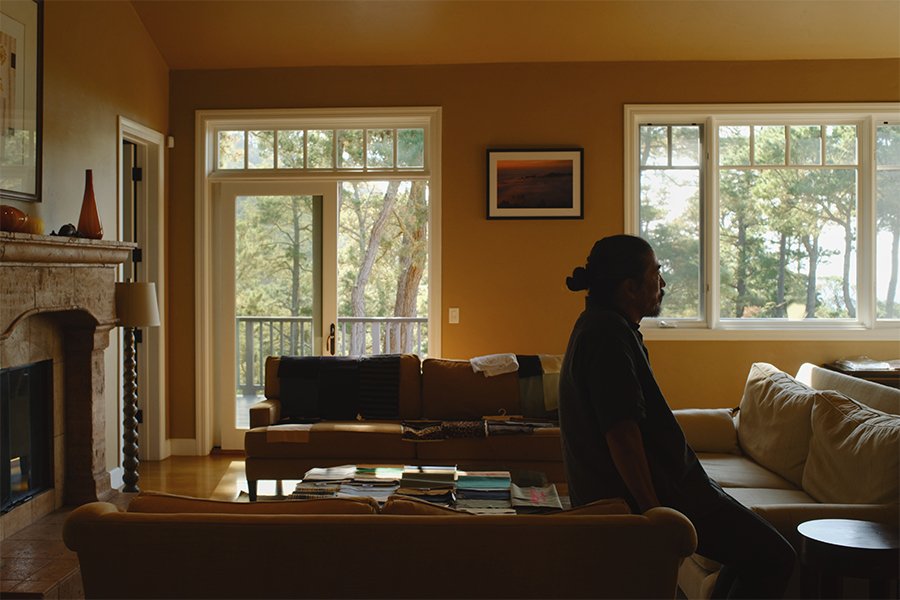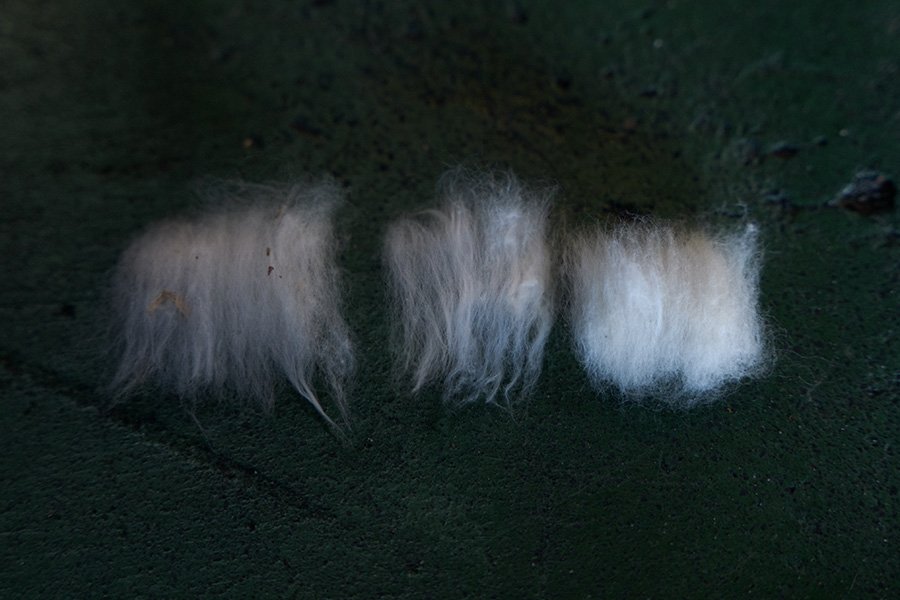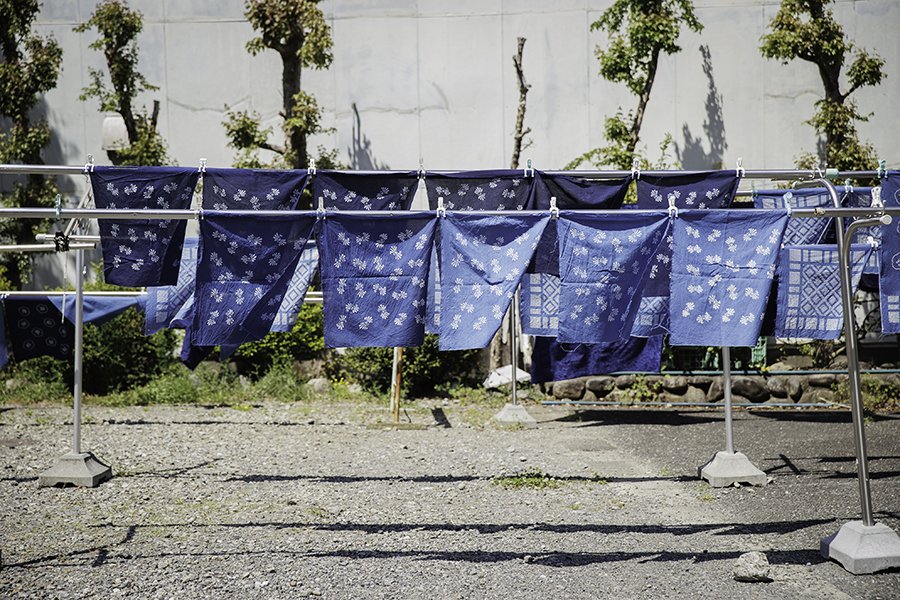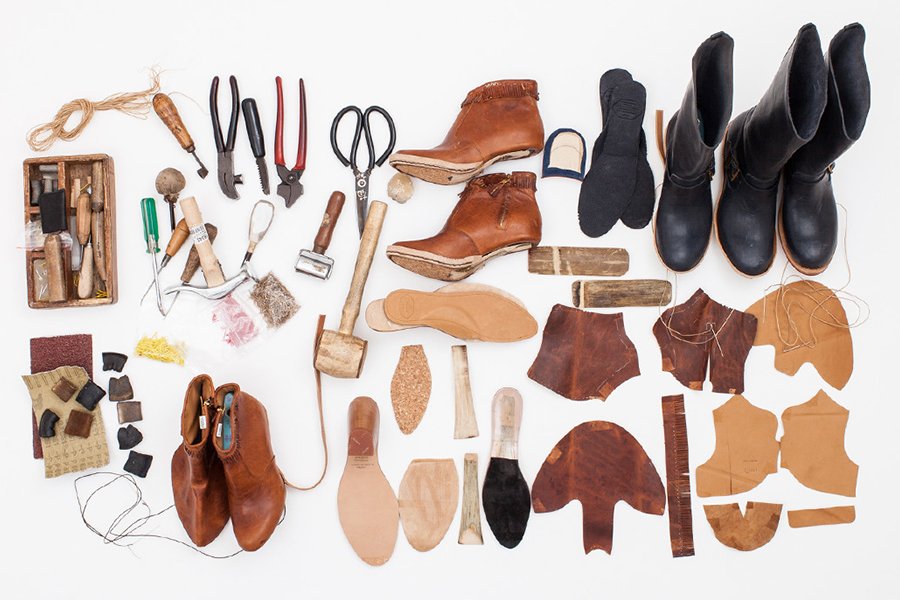Dissertation
Handle operated sewing machine
A typical "lockstitch" sewing machine operates by continuously feeding a fabric in the same direction, however a handle operated machine has the ability to freely depict patterns by adjusting the "frame" that holds the fabric in place to move in a 360-degree motion by operating the handle. Nowadays, computer operated sewing machines have become popular as they can control seam lines and thread tension digitally by way of a pre-programed setting that yields a more uniform finish, but with a handle operated machine the person who controls the movements adjusts with their hands to advance the stitch, where each stitch line can become slightly altered to exhibit minor fluctuations or distortions.
| Category: | Processing |
|---|
| Date: | 2024.08.06 |
|---|
| Tags: | #haandleoperatedsewingmachine #visvim |
|---|
A sewing technique commonly referred to as "chain stitch" in English, and "kan-nui" in Japanese is a method in which loops of thread get sewn with a hook needle and connect to form a "chain" like stitch as the name itself indicates. Another variation of the same method called "niju kan-nui" (double lock) utilizes two threads and joins them by passing the top thread through the bobbin thread, which is known to be stronger and more stable. This method was used to sew the hems on vintage denim from the 1930's to the 1970's. Chain stitching was originally conceived to be used as embroidery that would adorn the surface of finished fabrics to provide a decorative detail and the oldest example of this is said to have been discovered in B.C. China that incorporated a chain stitch using a silk thread.
A chain stitch can be used to fill a large area by layering seams horizontally and making it possible to create a variety of expressions applied as embroidery in the form of a personal name, a team name, logos, etc. on shirts, jackets, uniforms, as well as patches. There were numerous companies in the U.S. from the 1920's to the 1950's that produced special orders of this type of work. At these production sites handle operated sewing machines were used to "draw" patterns by sewing.
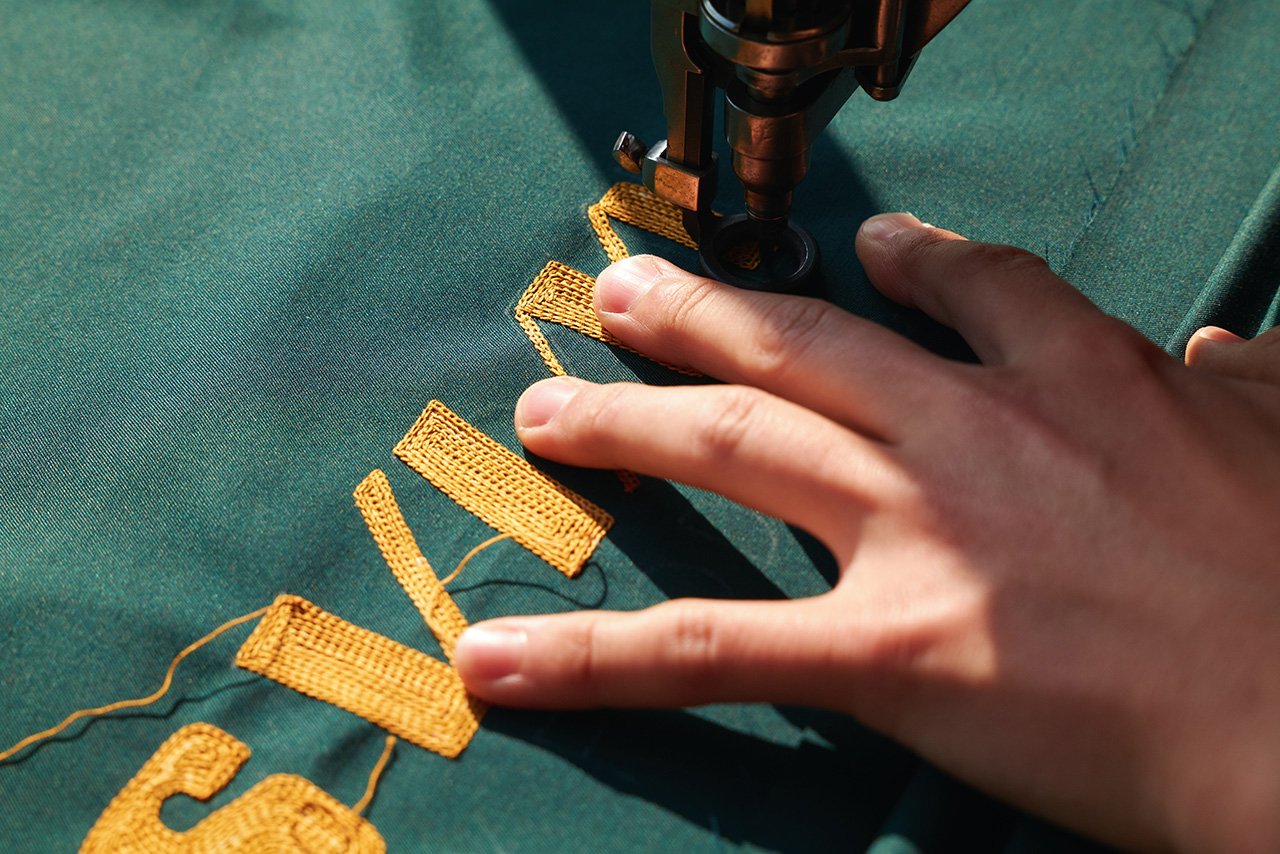
A typical "lockstitch" sewing machine operates by continuously feeding a fabric in the same direction, however a handle operated machine has the ability to freely depict patterns by adjusting the "frame" that holds the fabric in place to move in a 360-degree motion by operating the handle. Nowadays, computer operated sewing machines have become popular as they can control seam lines and thread tension digitally by way of a pre-programed setting that yields a more uniform finish, but with a handle operated machine the person who controls the movements adjusts with their hands to advance the stitch, where each stitch line can become slightly altered to exhibit minor fluctuations or distortions.
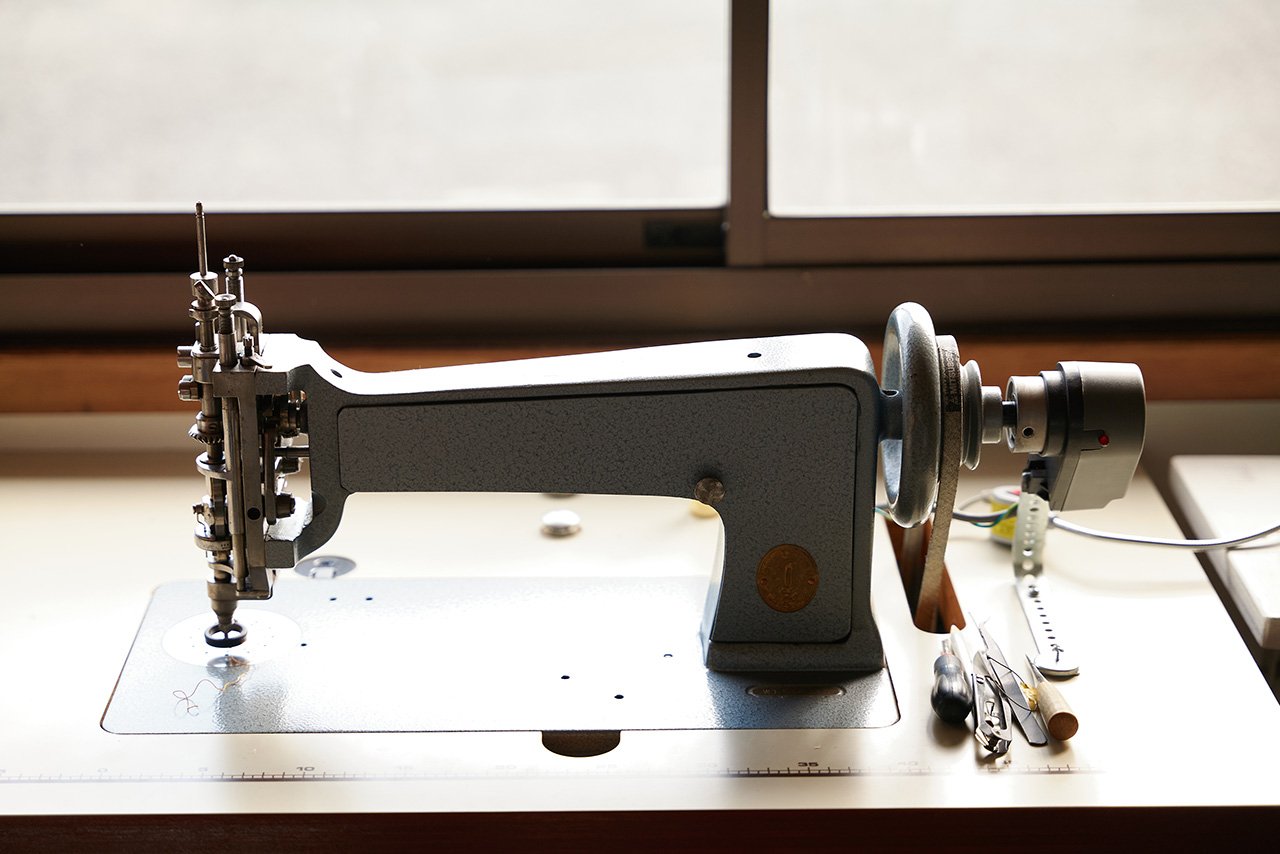
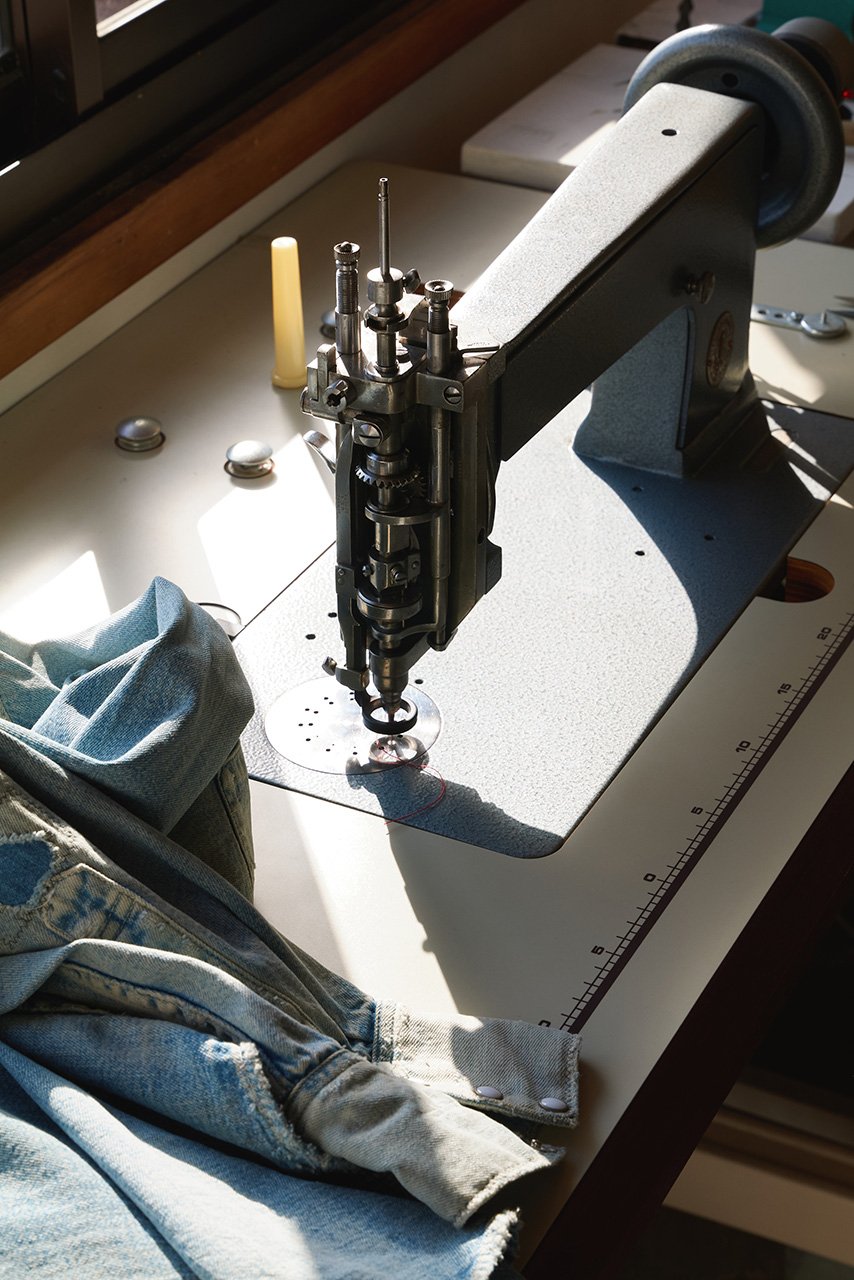
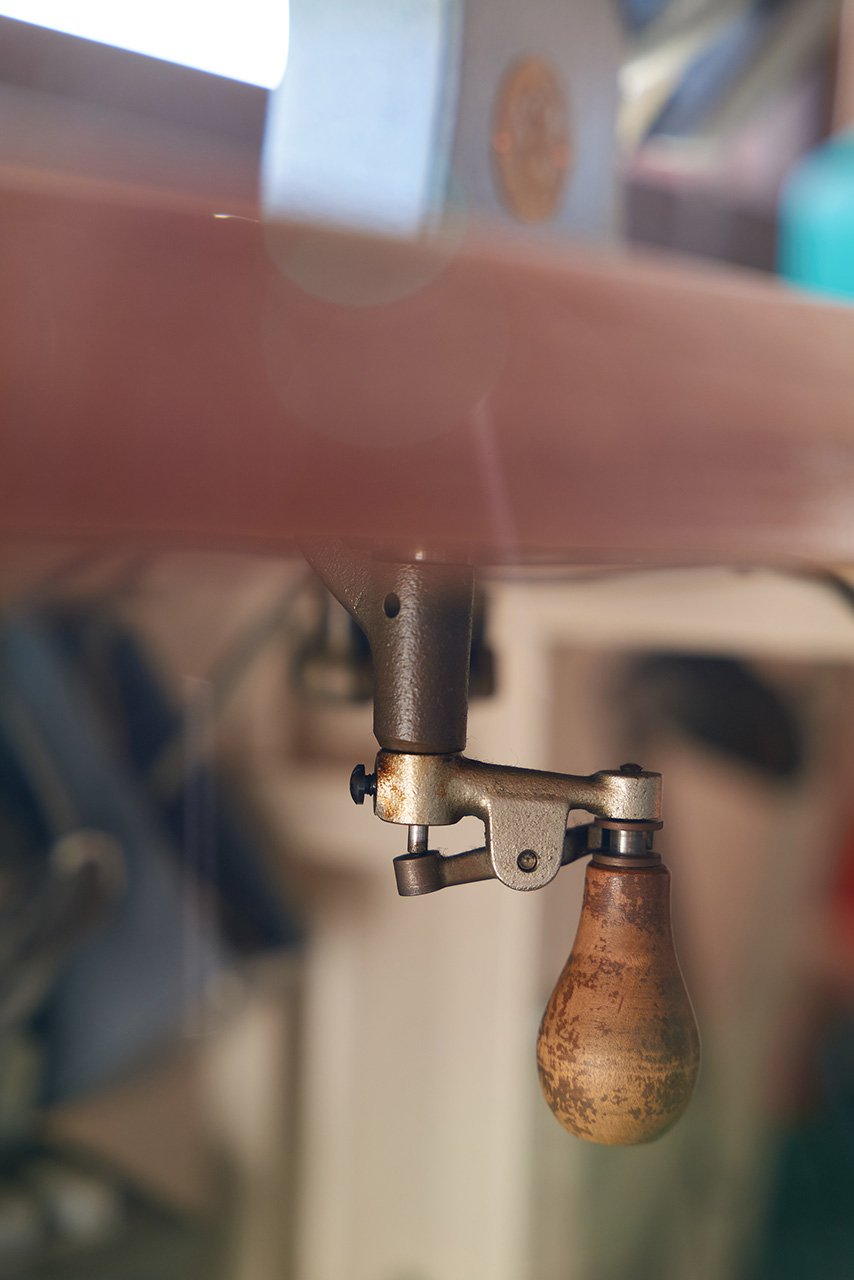
Yuji Ide is an individual who conducts embroidery work by making the most of these handle operated sewing machines in his atelier located in Mukaishima Island within Onomichi City of Hiroshima Prefecture. Originally from Gunma Prefecture, he spent about 7 years living in Australia and several countries in Europe before settling in the Setouchi area known for its denim and canvas production so he could "learn how to make clothing." Following some initial training, he went independent and started working for himself. From the window of his space, which was formerly a cafe, there are beautiful views of the islands in the Seto Inland Sea.
"One day, I happened to come across an American person on Instagram who was using an old handle operated machine to embroider, and I was amazed that such a technique existed. Even challenging to find in the U.S. today, I was able to track down a "Singer" handle operated machine, which I purchased and had shipped to me."
Handle operated sewing machines were not widespread in Japan as there was little demand for embroidery work of medium production volume so it seems that very few people have experience with such machines.
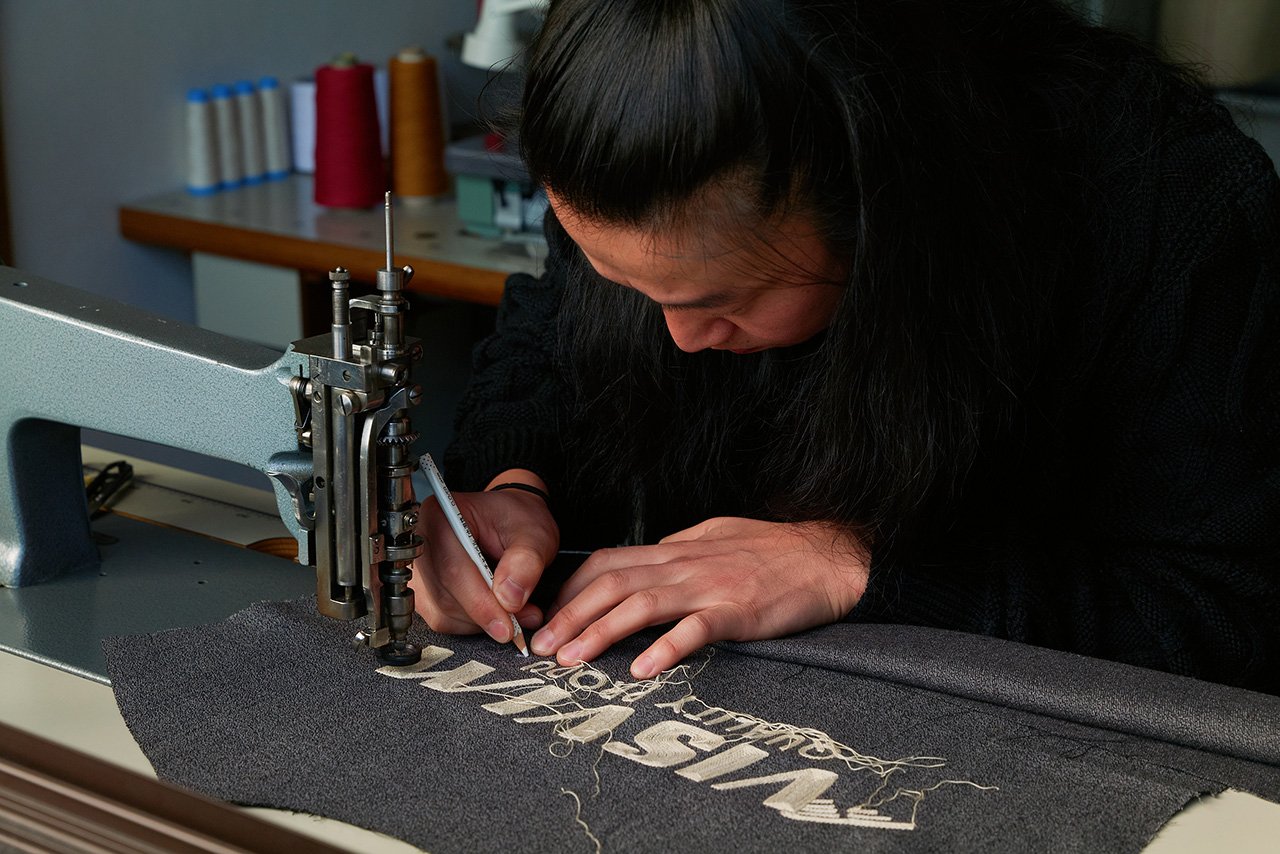
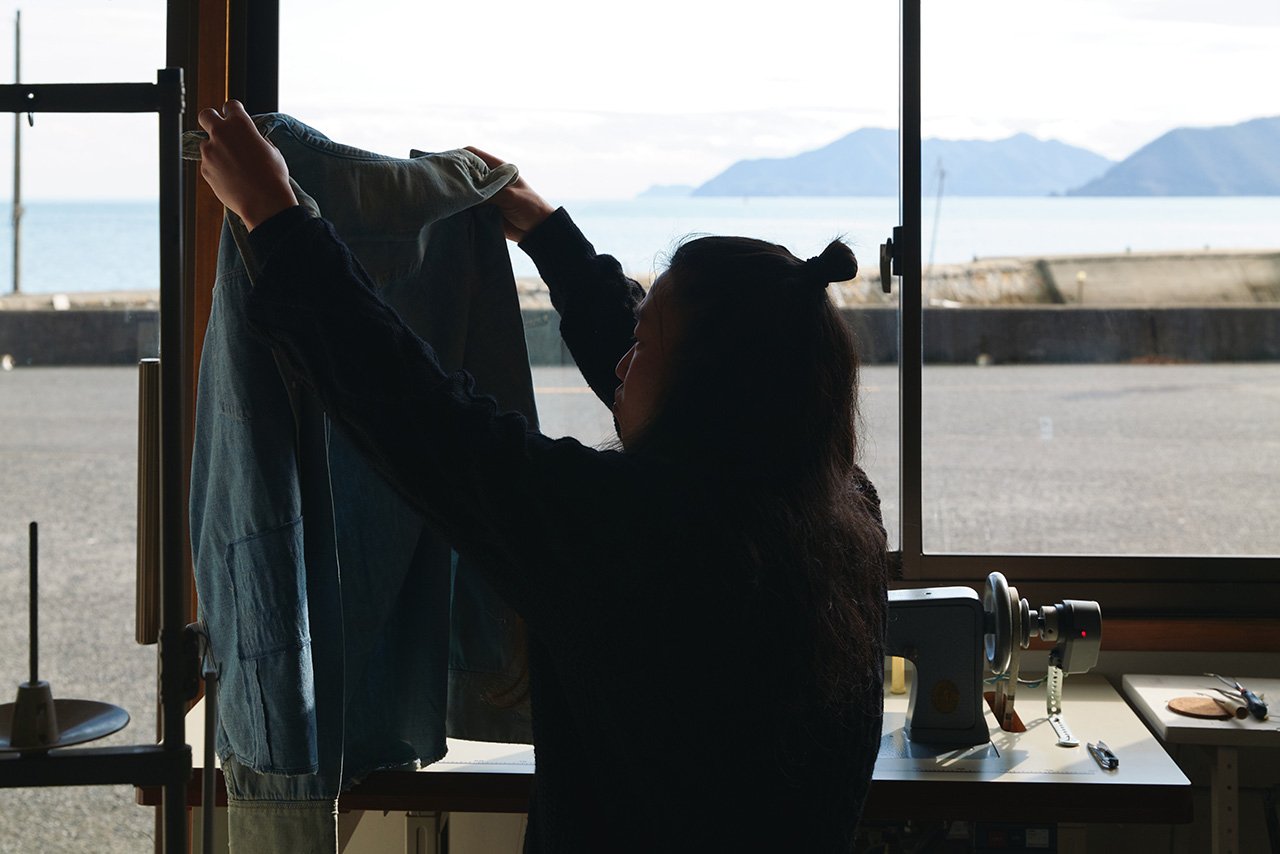
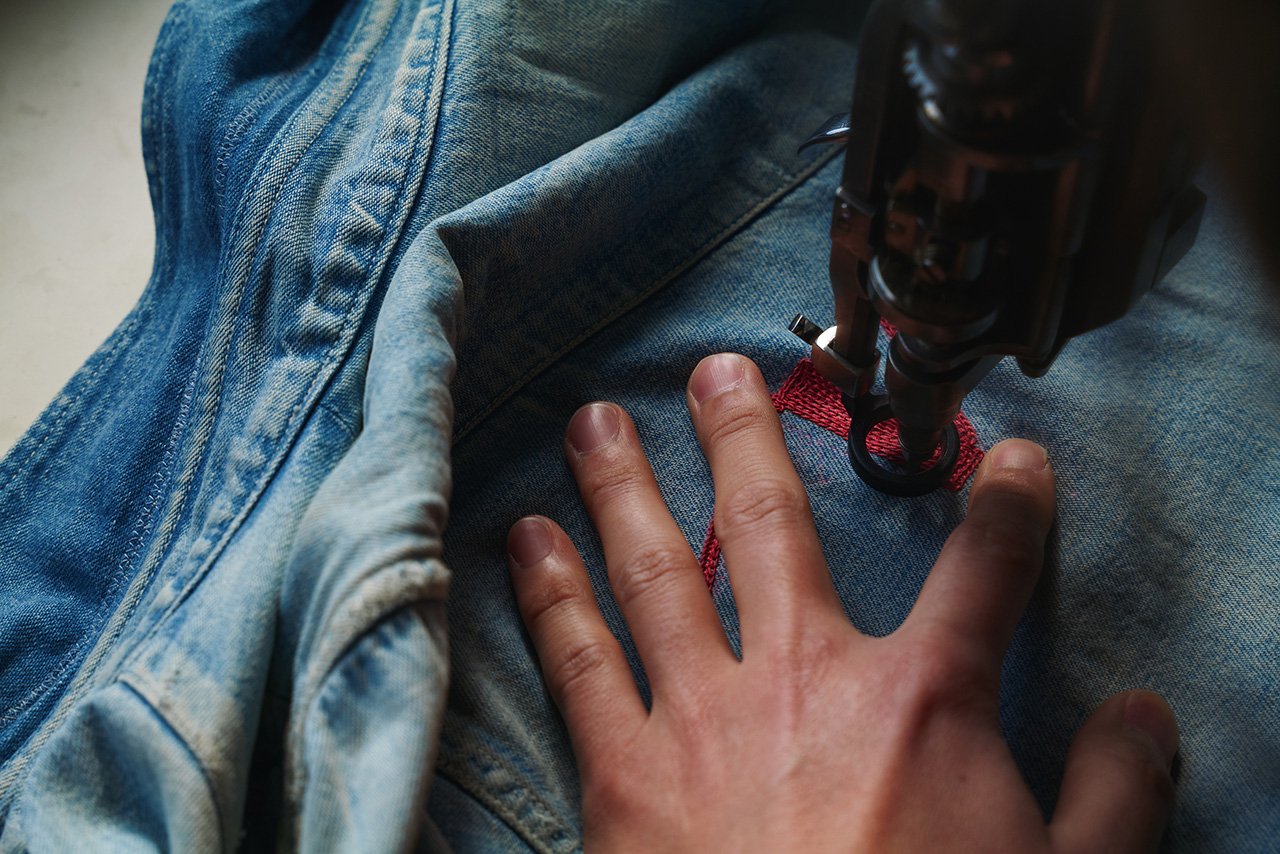
"Even local professionals who have been involved in sewing for many years do not understand the assembly, or how to use and maintain this sewing machine. I have asked many people for advice and collected information from the internet to figure out a way to use it on my own somehow."
By grasping the handle installed at the bottom of the sewing machine and maneuvering it little by little you meticulously sew each individual section as if you were drawing out one stroke at a time. It is in complete contrast to the high-speed movement of a needle that you may imagine in a typical sewing machine, and more of an up and down movement that has a slow rhythmic tempo to it that emanates a sense of human touch. You overlap the lines to avoid any noticeable gaps, and if the lines are off you untie the thread and sew again. It is a task that requires not only great amounts of time, but also a lot of concentration.
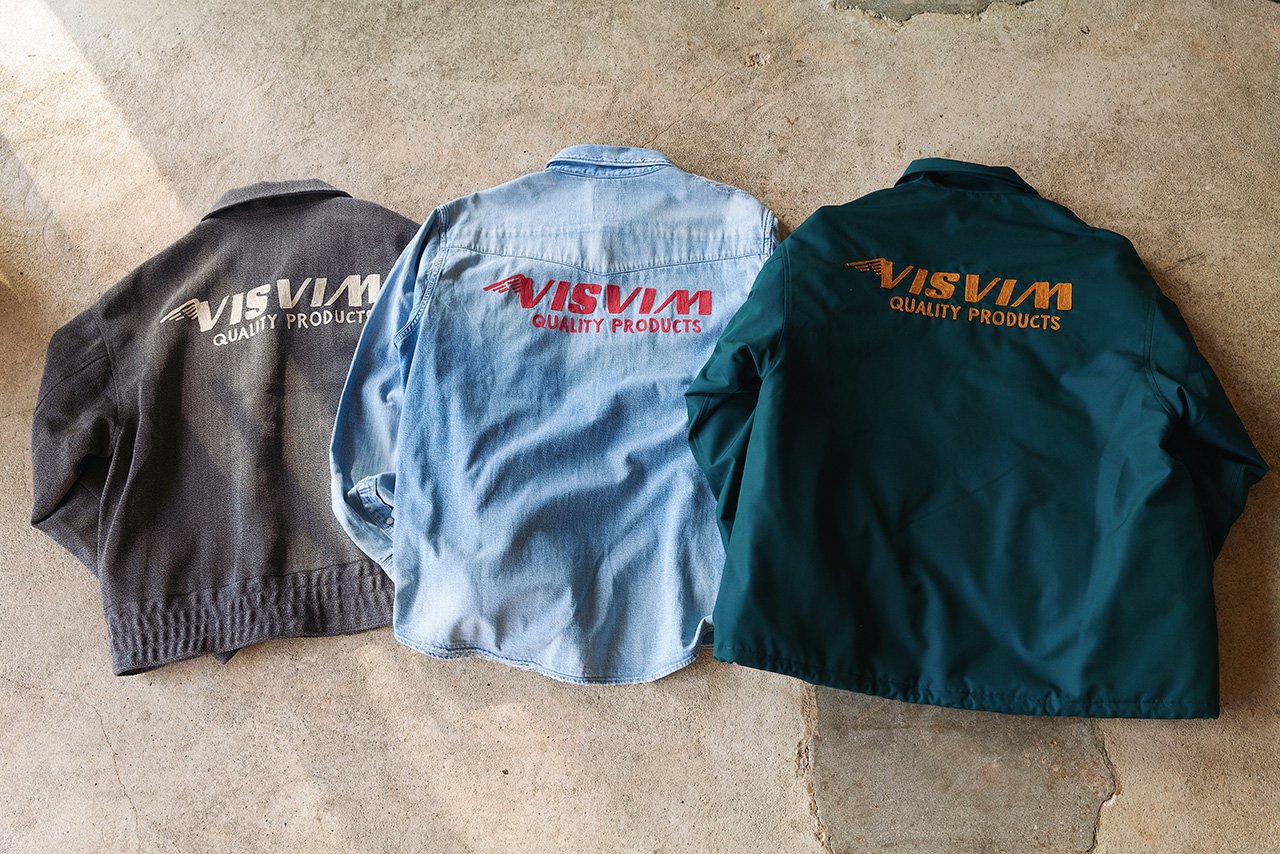
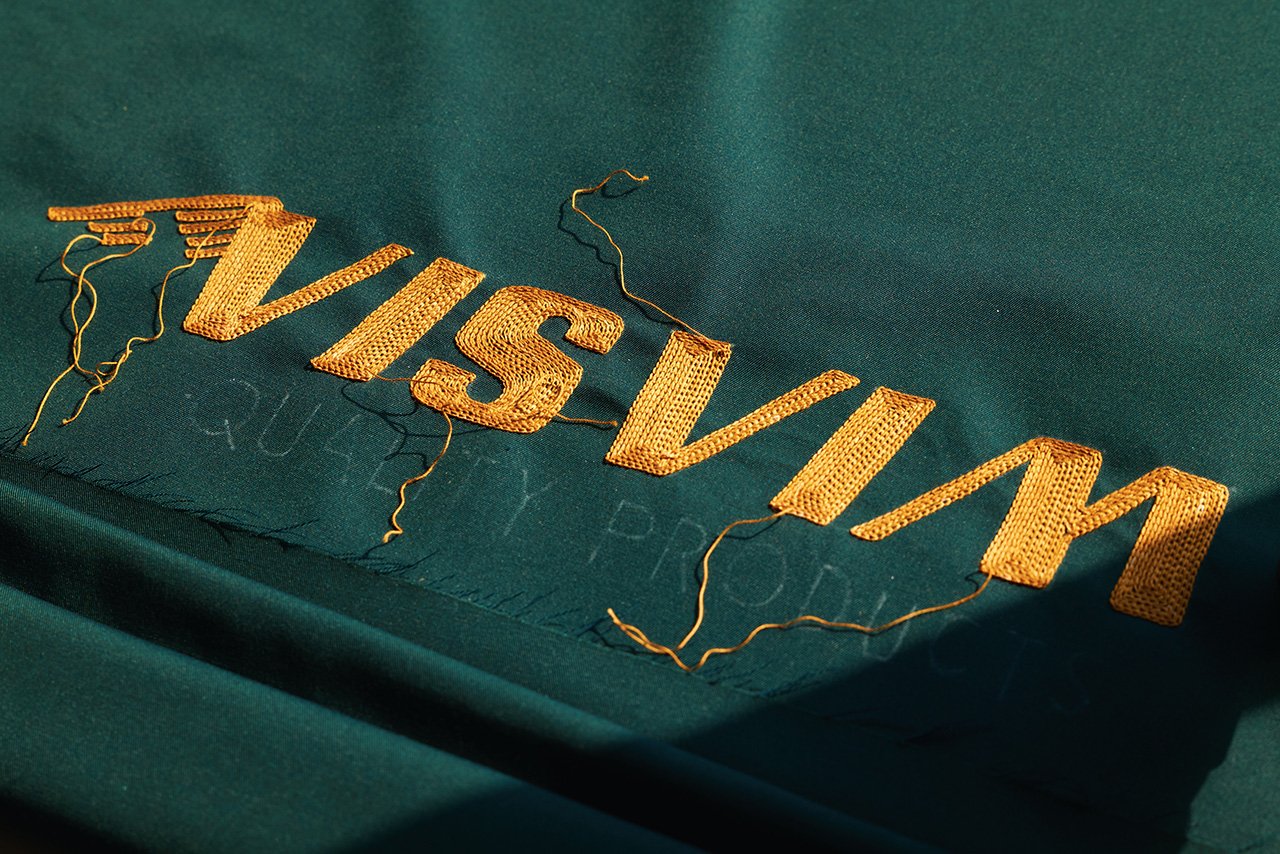
"When looking over a lot of the vintage pieces in my archive, many of them have chain stitch embroidery, but today it is so hard to find any workshops that can produce with a handle operated sewing machine. That is when I learned of this young person in Japan who had acquired a handle operated sewing machine and was working with it, so we decided to ask him to do some work for us," says visvim's Creative Director Hiroki Nakamura.
"I have always been fascinated by the variations and different tensions produced by the human hand and have utilized hand-stitched embroidery on numerous occasions; however a handle operated sewing machine has the ability to produce larger quantities of something that exudes its own unique feel of handiwork that is altogether different from actual hand sewing, which is very interesting. Of course, it is probably possible to convert "fluctuations created by hand" into a set of data and make mass production possible within a shorter time frame by using a more modern computer operated sewing machine, but that would also only create singular results over and over again. Instead, I want to cherish the unique individuality that can only be attained by taking the time to make each piece one at a time. I think it is wonderful to discover work that allows one to feel the artistic spirit and thoughts of the sewer behind it."
Text: Kosuke Ide
Photo, Movie: Keisuke Fukamizu
Movie edit: cubism





